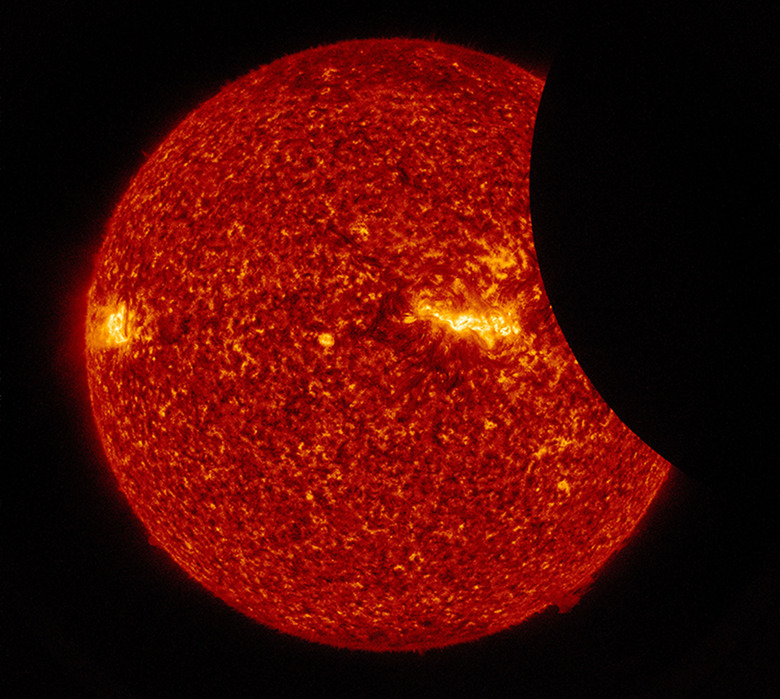We Just Got The Highest Res Photo Ever Of The Sun: Here's Why It Matters
You've never seen the sun like this before – literally. The National Science Foundation has just released the highest resolution photo of the sun's surface that anyone has ever taken.
If you didn't know you were looking at the sun, you probably wouldn't recognize the corn nut-looking blobs in the photo as the glowing sphere you see in the sky. But the photo was able to capture what it might really look like about 93 million miles away from us, on the surface of the sun.
It's not too peaceful up there. Stuff goes down on the sun's surface – the golden blobs you see in the photo are actually churning balls of plasma. And though the photo makes it seem as if all those oozing little plasma balls could be held in the palm of a hand, each one is actually the size of Texas.
How Did We Even Get This Photo!?
How Did We Even Get This Photo!?
With some giant mirrors, even more giant telescopes and a ton of complex, hard work. The telescope is stationed on Haleakala, the highest summit in Maui, and it's as powerful a telescope as they come.
It's called the Daniel K. Inouye Solar Telescope, or DKIST, and like most telescopes, it uses a variety of curved mirrors to gather light from the night sky in order to give us better views of what's out there.
But unlike most telescopes, it's huge – about 13 feet wide – and has a mirror that adjusts an astounding 2,000 times per second, in order to make sure the Earth's atmosphere doesn't distort images too much. This means it's able to gather even more light and get as close a view of the sun as we've ever had.
And there's even more coming. When NASA's solar probe and a solar orbiter give us even more images of the surface of the sun, researchers will be able to reconstruct the data from all three tools to give us even more info about the violent, explosive activity constantly happening on that giant star.
What Does This Mean for Me?
What Does This Mean for Me?
It's pretty cool knowing what the surface of the sun looks like, considering none of us are ever going to see it. But you might also be wondering – beyond being cool, why do we need to see exactly what's happening up there?
Part of the reason is that in addition to, well, helping to sustain life on Earth, the sun interferes with life on our planet (and the humans in space!). The sun's atmosphere is powerful, and releases tons of magnetic energy throughout space. When it does, events like "space weather," or solar flares, can happen. These can wreak havoc as far away as Earth.
There have been some pretty dangerous solar storms in the past. In 1972, one knocked out long distance telephone lines across some states. Another, in 1989, disrupted electric grids in the U.S., leaving about 6 million people without power for hours. Now, in a world where humans are more connected via satellites and grids than ever before – and when we have astronauts from around the world camped out on the International Space Station, which solar flares could also hit – scientists are eager to learn more about those solar flares and how, if possible, to get some warning about when they're coming.
Who knows? A cool image today could be the key to help saving you from a power outage later.
Cite This Article
MLA
Dragani, Rachelle. "We Just Got The Highest Res Photo Ever Of The Sun: Here's Why It Matters" sciencing.com, https://www.sciencing.com/high-res-photo-of-sun-13724454/. 2 February 2020.
APA
Dragani, Rachelle. (2020, February 2). We Just Got The Highest Res Photo Ever Of The Sun: Here's Why It Matters. sciencing.com. Retrieved from https://www.sciencing.com/high-res-photo-of-sun-13724454/
Chicago
Dragani, Rachelle. We Just Got The Highest Res Photo Ever Of The Sun: Here's Why It Matters last modified August 30, 2022. https://www.sciencing.com/high-res-photo-of-sun-13724454/
